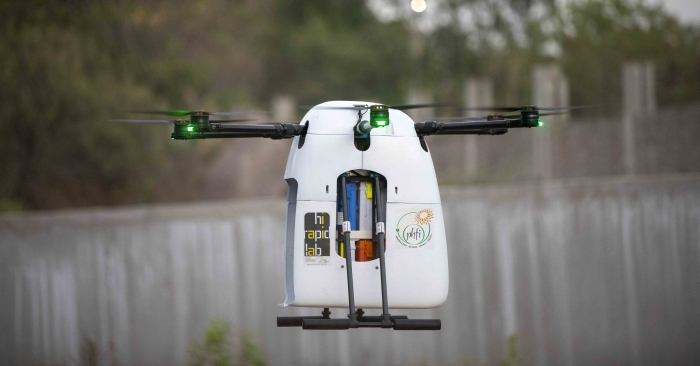India liberalises drone rules from permission-intensive to trust-based
August 26, 2021: The ministry of civil aviation today released the liberalised Drone Rules, 2021 moving away from a permission intensive regulation to a trust-based regulation to help the industry grow, in a press conference to discuss its applications.

August 26, 2021: The ministry of civil aviation today released the liberalised Drone Rules, 2021, moving away from a permission intensive regulation to a trust-based regulation to help the industry grow, in a press conference to discuss its applications.
Prime minister Narendra Modi tweeted, "The rules are based on the premise of trust and self-certification. Approvals, compliance requirements and entry barriers have been significantly reduced."
Civil aviation minister Jyotiraditya Scindia said, "These aim at simplifying procedures &reducing the compliance burden for drone operation."
In March 2021, MoCA had published the UAS Rules, 2021 and they were perceived by academia, startups, end-users and other stakeholders as being restrictive in nature as they involved considerable paperwork, required permissions for every drone flight and very few free to fly green zones were available. Based on the feedback, the government has decided to repeal the UAS Rules, 2021 and replace the same with the liberalised Drone Rules, 2021 while proposing to develop drone corridors for cargo deliveries.
The MOCA release reads, "India has the potential to be a global drone hub by 2030."
Prem Kumar Vislawath, founder & chief innovator of Marut Dronetech called it a major milestone for the Indian drone ecosystem.
"India, which is poised to become one of the largest markets for drones with several ambitious projects like T-MEDS, Medicine from the Sky, Seedcopter, SVAMITVA Yojana and Pradhan Mantri Fasal Bima Yojana recognising drones as the key technology for driving change, shall see a hockey stick growth for the drone industry with the publication of these rules," he said.
"We appreciate the MoCA's initiative of liberalising the drone industry and will continue to extend our support towards making India a global drone hub," he added.
The Drone Rules 2021 allows self-certification while abolishing several approvals. It reduced the number of forms from 25 to 5 and reduced types of fees from 72 to 4. It proposes to develop Digital sky platform as a user-friendly single-window system with minimal human interface and most permissions self-generated.
"Interactive airspace map with green, yellow and red zones shall be displayed on the digital sky platform within 30 days of publication of these rules. No permission is required for operating drones in green zones. Green zone means the airspace up to a vertical distance of 400 feet or 120 metres that has not been designated as a red zone or yellow zone in the airspace map; and the airspace up to a vertical distance of 200 feet or 60 metres above the area located between a lateral distance of 8 and 12 kilometres from the perimeter of an operational airport. Yellow zone reduced from 45 km to 12 km from the airport perimeter," reads the MoCA release.
Drones present in India on or before November 30, 2021, will be issued a unique identification number through the digital sky platform provided, they have a DAN, a GST-paid invoice and are part of the list of DGCA-approved drones.
Drone promotion council to be set up by the government with participation from academia, startups and other stakeholders to facilitate a growth-oriented regulatory regime.

Libin Chacko Kurian
Assistant Editor at STAT Publishing Group, he has eight years of experience in business journalism covering food & beverage, nutraceuticals and now logistics. His current passion is to understand the nuances of global supply chains and their current turmoil. Outside work, he is also interested in philosophy, history, birding and travelling. Mail him: libin@statpublishinggroup.com Follow on LinkedIn


